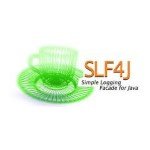Spring Boot Hibernate Tips
1. Overview
Hibernate needs no introduction. It is the most popular ORM out there for Java.
Similarly, Spring Boot is the most powerful, and easy to use framework out there for Java.
This tutorial isn’t about Hibernate or Spring Boot, there are tons of them out there.
We’ll look into some common errors that you may run into when using them together and how to fix them.
2. Dependencies
We’ll use Gradle to build our project. I recommend using Spring Initializr for bootstrapping your project.
We’ll use:
- Spring Boot 2
- Spring Webflux
- Spring Data JPA
- Spring Data Envers
- Jackson Annotations
- Jackson DataType Hibernate
- H2 Database
- Lombok
Spring Data Envers allows us to access entity revisions managed by Hibernate Envers.
Jackson Annotations will help us to avoid the common Stack Overflow errors that are caused by JPA relationships.
Jackson DataType Hibernate Module will help with Hibernate types and lazy-loading aspects.
We’ll look into all of these in a while.
buildscript {
ext {
springBootVersion = '2.0.6.RELEASE'
}
...
}
dependencies {
implementation('org.springframework.boot:spring-boot-starter-data-jpa')
implementation('org.springframework.boot:spring-boot-starter-webflux')
implementation("org.springframework.data:spring-data-envers")
implementation("com.fasterxml.jackson.core:jackson-annotations:2.9.7")
implementation("com.fasterxml.jackson.datatype:jackson-datatype-hibernate5:2.9.7")
runtimeOnly('com.h2database:h2')
compileOnly('org.projectlombok:lombok')
...
}
We’ll use H2 to run our project.
3. Entities
In this example, we’ll use JPA to create universities and students.
It’s always a good idea to store common logic & properties in a superclass.
We will create a superclass for our entities and store common properties in it.
Let’s have a look at our BaseEntity class.
@Getter @Setter @NoArgsConstructor @AllArgsConstructor @FieldDefaults(level = AccessLevel.PRIVATE)
@MappedSuperclass
@EntityListeners({AuditingEntityListener.class})
@JsonIdentityInfo(generator = ObjectIdGenerators.PropertyGenerator.class, property = "id")
public abstract class BaseEntity {
@Id
@GeneratedValue
Long id;
@CreatedDate
LocalDateTime createdAt;
@LastModifiedDate
LocalDateTime updatedAt;
}
One thing you can notice is that I haven’t used the @Data annotation from Lombok on our class. @Data annotation automatically adds @ToString annotation which may cause Stack Overflow errors. Hence it’s better to manage the annotations manually.
@MappedSuperclass annotation allows entities to inherit properties from a base class. This annotation is very important if you want to inherit properties from a base class.
@EntityListeners({AuditingEntityListener.class}) enables Auditing. We are using @CreatedDate & @LastModifiedDate to capture when the entity was created or modified. This will be taken care by Spring Data JPA.
@JsonIdentityInfo will avoid the Stack Overflow errors when converting our entities to JSON.
This annotation is required to break the infinite cycle due to the bi-directional relationships between our entities.
You may also want to check out @JsonBackReference & @JsonManagedReference to see if they fit better with your requirements.
Let’s have a look at our University & Student entities.
@Getter @Setter @NoArgsConstructor @AllArgsConstructor @Builder @FieldDefaults(level = AccessLevel.PRIVATE)
@Entity @Audited
public class Student extends BaseEntity{
String name;
@ManyToOne
University university;
}
@Getter @Setter @NoArgsConstructor @AllArgsConstructor @Builder @FieldDefaults(level = AccessLevel.PRIVATE)
@Entity @Audited
public class University extends BaseEntity{
String name;
String city;
@OneToMany(mappedBy = "university")
Set<Student> students = new HashSet<>();
}
@Audited will enable Hibernate managing the auditing (tracking changes) on that Entity.
4. Configuration
Let’s check the configurations required to run our project.
4.1. Hibernate Jackson Module
@Bean
public Module hibernateModule(){
return new Hibernate5Module();
}
We are registering a new Jackson Module.
Spring Boot will auto-detect it and register it to the ObjectMapperbean.
4.2. Hibernate Envers
To enable Envers auditing, we have to extend our Repositories with RevisionRepository.
Let’s have a look at our UniversityRepository.
public interface UniversityRepository extends RevisionRepository<University, Long, Long>, JpaRepository<University,Long> {
}
We’ll have to similarly do this for our StudentRepository.
public interface StudentRepository extends RevisionRepository<Student, Long, Long>, JpaRepository<Student,Long> {
}
We also have to annotate our main class with @EnableJpaRepositories(repositoryFactoryBeanClass = EnversRevisionRepositoryFactoryBean.class).
We’ll look at the main class in a while after going through other annotations that we need.
4.3. Spring Data Auditing
To enable this, we’ll have to annotate our main class with @EnableJpaAuditing.
Let’s look at it.
@SpringBootApplication
@EnableJpaAuditing
@EnableJpaRepositories(repositoryFactoryBeanClass = EnversRevisionRepositoryFactoryBean.class)
public class HibernateTipsApplication {
public static void main(String[] args) {
SpringApplication.run(HibernateTipsApplication.class, args);
}
}
5. Conclusion
I have tried explaining, with a simple example, how to create REST applications using Spring Boot & Hibernate.
This might solve some of your Stack Overflow errors.
Else, you might want to consider writing your own Data Transfer Objects (DTO).
If you need support for data types that aren’t supported by the core Hibernate ORM, you might want to check out this library.
You can read more about:
You can find the complete example on Github.





